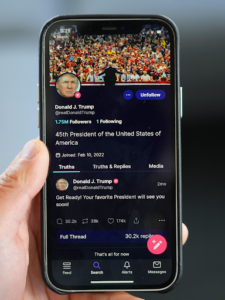By Sheldon Yeakley
We are entering an era of the freak athlete, the culmination of years of proper strength and conditioning training, coaching, and nutrition. Some athletes of today are going to be able to withstand the physical pressure of being a running quarterback and execute at the level the NFL demands. This development has been proven by Cam Newton’s 10 regular season rushing touchdowns.
Newton rose to fame by leading Auburn to a national championship. Yet this did not shock anyone, and more importantly his 22 rushing attempts were not out of the ordinary either.
For years, the very notion of a running quarterback has been considered impractical in the NFL. The common consensus throughout the NFL Super Bowl era has been that running quarterbacks will be injured and are inefficient in the pocket. But something is changing.
Suddenly, coaches are discovering that not only can quarterbacks throw the ball, but also they can scramble and throw it. More often, audiences are thrilled by spectacular, play-extending scrambles from Russell Wilson, or even the rambling evasiveness of Tony Romo. Still, the designed quarterback run seemed to be utilized only by the New England Patriots when on the 1-yard line. Until now.
The Carolina Panthers have realized what they have in Newton: a modern-style athlete who can take over the game. Gone are the days of system players whose positions were defined by their body type. Now a freak athlete like Newton, who at 248 pounds and 6 feet 5 inches is built like he could play defensive line but manages to complete over 4,000 passing yards in the 2015-16 season. The closest comparison is LeBron James, whose size and strength as a forward/center is complemented by the skills of a point-guard.
Another key factor is the fact that this shift is originating from the collegiate level, rather than trickling down from the NFL.
From new plays to defensive and offensive schemes, most new elements of the game have followed a similar path of innovation – a creative and daring coach in the NFL will implement it on Sunday, and then, with varying success, it appears on Saturday and Friday as well.
However, the running quarterback has remained a mainstay in college football. Programs across the board feature quarterbacks who are a dual threat, and are used in designed runs.
These quarterbacks have had trouble transitioning into the NFL. Many flunk out or perform at a mediocre level when asked by NFL teams to adapt quickly to a new system of pure pocket passing. With the new level of performance available by larger and more durable athletes like Newton, though, the implementation of the college-style plays and systems has remarkably started to appear in the NFL.
Therefore, with the 2016 Super Bowl approaching, the actual conflict of old and new will play out on a national stage. The change in definition of position and style can be verified even if the Panthers lose. Many teams will begin to use the college-style running quarterbacks as more and more extremely athletic quarterbacks continue to enter the draft and players like Newton defy tradition logic.
Sheldon Yeakley is a junior at Oklahoma Christian University.
The opinions of guest columnists are their own and do not necessarily reflect the opinions of the Talon or Oklahoma Christian University. Guest opinions are presented to foster public debate on important topics and comments should be respectful and signed.














Be First to Comment